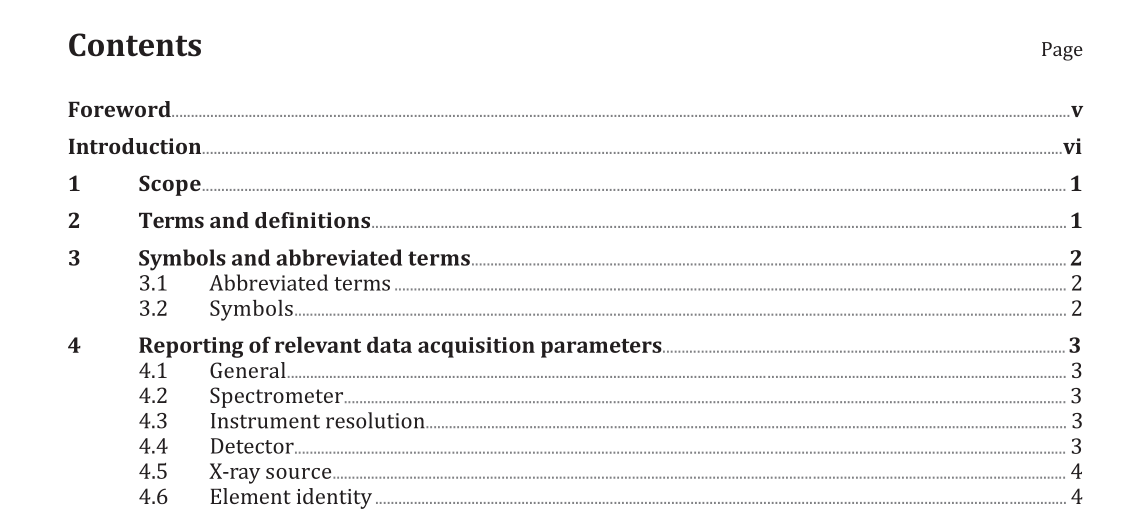BS ISO 19830:2015 pdf download.Surface chemical analysis — Electron spectroscopies — Minimum reporting requirements for peak fitting in X-ray photoelectron spectroscopy
1 Scope
The purpose of this International Standard is to define how peak fitting and the results of peak fitting in X-ray photoelectron spectroscopy shall be reported. It is applicable to the fitting of a single spectrum or to a set of related spectra, as might be acquired, for example, during a depth profile measurement. This International Standard provides a list of those parameters which shall be reported if either reproducible peak fitting is to be achieved or a number of spectra are to be fitted and the fitted spectra compared. This International Standard does not provide instructions for peak fitting nor the procedures which should be adopted.
4 Reporting of relevant data acquisition parameters
4.1 General
This Clause applies to the instrumental parameters that can affect the shape of a peak, peak envelope, or background in a spectrum. Such parameters will therefore affect the parameters that define the fitted spectrum and so they shall be reported.
4.2 Spectrometer
There are instrumental and acquisition parameters that influence the shape of the peaks in an XPS spectrum. These parameters can also affect the results of any peak fitting activity and shall be reported. In addition, the relationship between instrumental parameters and the results obtained from peak fitting may depend upon the precise design of instrument used. An example of this is the relationship between the pass energy used to acquire the data and the resolution of the peaks in the spectrum. It is therefore necessary to report the manufacturer and the model of the instrumentation used. This can either be the model name (including a version identifier, if appropriate) of the complete spectrometer or the model names of the key components.
4.4 Detector
The type of detector employed in the spectrometer can have an effect upon the shape of the acquired spectrum. Common types of detector include multiple channel electron multipliers and channel plate detectors. The type of detector employed shall be reported. Instruments with channel plates or a large number of channel electron multipliers may be operated in either the “scanned mode” or the “snapshot mode” depending upon whether the median energy of the analyser changes during the spectrum acquisition (scanned) or whether it is constant (snapshot). The type of spectrum acquired shall be reported. If the quality and reliability of the fitted spectrum is to be fully assessed, then there shall be some indication of the amplitude of the noise in the spectrum. The majority of XPS spectrometers use an electron multiplier connected to some form of pulse counting equipment. This means that the dominant form of noise in the spectrum is due to Poissonian statistics. Since this form of noise is purely statistical, it is only related to the number of counts in each of the channels of the spectrum. For the purposes of reporting peak fitting results, it is only necessary to report the number of counts in the channel that contains the maximum number of counts. It should be noted that if the data are transformed in some way (for example, by correcting for the transmission function of the instrument), then the data may not conform to Poissonian statistics.
BS ISO 19830:2015 pdf download
